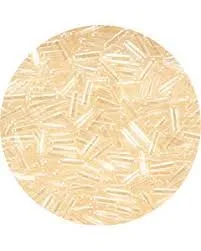
Nov . 22, 2024 18:26 Back to list
hpmc cmc
Understanding HPMC and CMC A Comprehensive Overview
Hydroxypropyl Methylcellulose (HPMC) and Carboxymethyl Cellulose (CMC) are two widely used cellulose derivatives that play significant roles in various industries, including food, pharmaceuticals, cosmetics, and construction. These compounds have unique properties that render them valuable for multiple applications, contributing to their growing popularity.
HPMC An Overview
Hydroxypropyl Methylcellulose (HPMC) is a semi-synthetic polymer derived from cellulose. It is produced by modifying cellulose through the addition of hydroxypropyl and methyl groups. This modification not only enhances the solubility of the cellulose but also imparts unique properties such as improved thermal stability, film-forming capabilities, and excellent thickening abilities.
One of the most appealing characteristics of HPMC is its ability to retain water, making it a popular choice in the formulation of products needing moisture retention. In the food industry, HPMC is used as a thickener, emulsifier, and stabilizer, often found in sauces, dressings, and baked goods. Its ability to form gels and create a creamy texture makes it a favorite among food technologists.
In pharmaceuticals, HPMC is utilized in tablet formulations and controlled-release medications due to its biocompatibility and non-toxic nature. Its gel-forming properties allow for the sustained release of active ingredients, enhancing the effectiveness of the medication. Furthermore, HPMC is commonly used as an excipient in various dosage forms, ensuring the proper consistency and stability of the products.
.
Carboxymethyl Cellulose (CMC), another derivative of cellulose, is produced by the carboxymethylation of cellulose, resulting in a compound that is highly soluble in water. Like HPMC, CMC is known for its thickening and stabilizing properties, but it also offers unique advantages that make it suitable for different applications.
hpmc cmc

In the food industry, CMC serves primarily as a thickener and stabilizer. It is often used in ice creams, jellies, and low-fat products to improve texture and mouthfeel. Additionally, CMC plays a critical role in preventing ice crystal formation in frozen goods, thereby maintaining product quality.
In the pharmaceutical realm, CMC is widely used as a viscosity-increasing agent, binding agent, and film-forming agent. Its ability to create gels and stabilize emulsions makes it ideal for various formulations such as ointments, creams, and liquid medications. Moreover, its non-toxic nature and compatibility with numerous active ingredients have led to its widespread use in both prescription and over-the-counter products.
Comparative Analysis of HPMC and CMC
While both HPMC and CMC are cellulose derivatives with similar thickening and stabilizing properties, they possess distinct characteristics that make them suitable for specific applications. HPMC is known for its superior thermal stability and ability to form films, while CMC is recognized for its excellent water solubility and viscosity management.
In terms of food applications, HPMC is often preferred for products requiring a creamy texture and prolonged moisture retention. In contrast, CMC is favored for its ability to stabilize emulsions and control texture in low-fat formulations. Similarly, in pharmaceuticals, HPMC is used for controlled-release applications, while CMC is utilized for immediate-release formulations and as a thickening agent in various topical preparations.
Conclusion
Understanding the properties and applications of HPMC and CMC is essential for industries seeking to improve product formulation and performance. As food, pharmaceutical, and cosmetic trends evolve, the demand for effective thickening and stabilizing agents continues to grow. Both HPMC and CMC have established themselves as indispensable compounds, each serving unique roles that enhance product quality and consumer satisfaction. As research advances, these cellulose derivatives will likely find even broader applications, solidifying their positions in various sectors.
-
Versatile Hpmc Uses in Different Industries
NewsJun.19,2025
-
Redispersible Powder's Role in Enhancing Durability of Construction Products
NewsJun.19,2025
-
Hydroxyethyl Cellulose Applications Driving Green Industrial Processes
NewsJun.19,2025
-
Exploring Different Redispersible Polymer Powder
NewsJun.19,2025
-
Choosing the Right Mortar Bonding Agent
NewsJun.19,2025
-
Applications and Significance of China Hpmc in Modern Industries
NewsJun.19,2025







